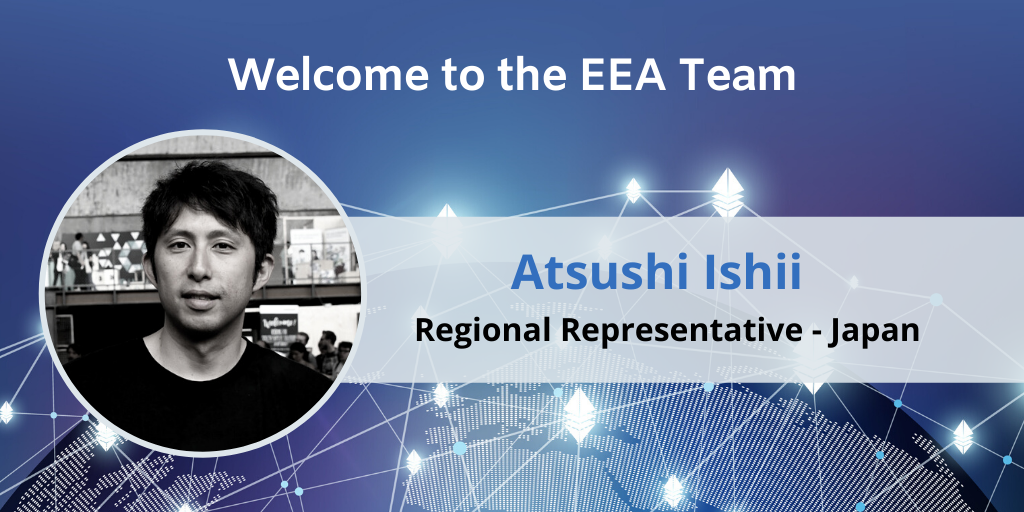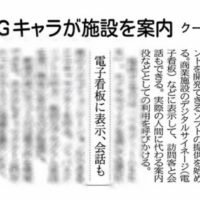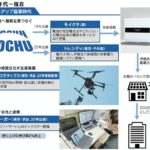Couger Inc (Headquarters: Shibuya-ku, Tokyo; CEO: Atsushi Ishii; hereafter "Couger") is pleased to announce that Devanathan Sabarinathan and Dr. Priya Kansal of Couger have won second place in the Thermal Image Super-Resolution Challenge, a competition organized by the IEEE. This is the world's largest society for electrical engineering and electronics technology. Their paper has been accepted by CVPR, the top conference for computer vision.
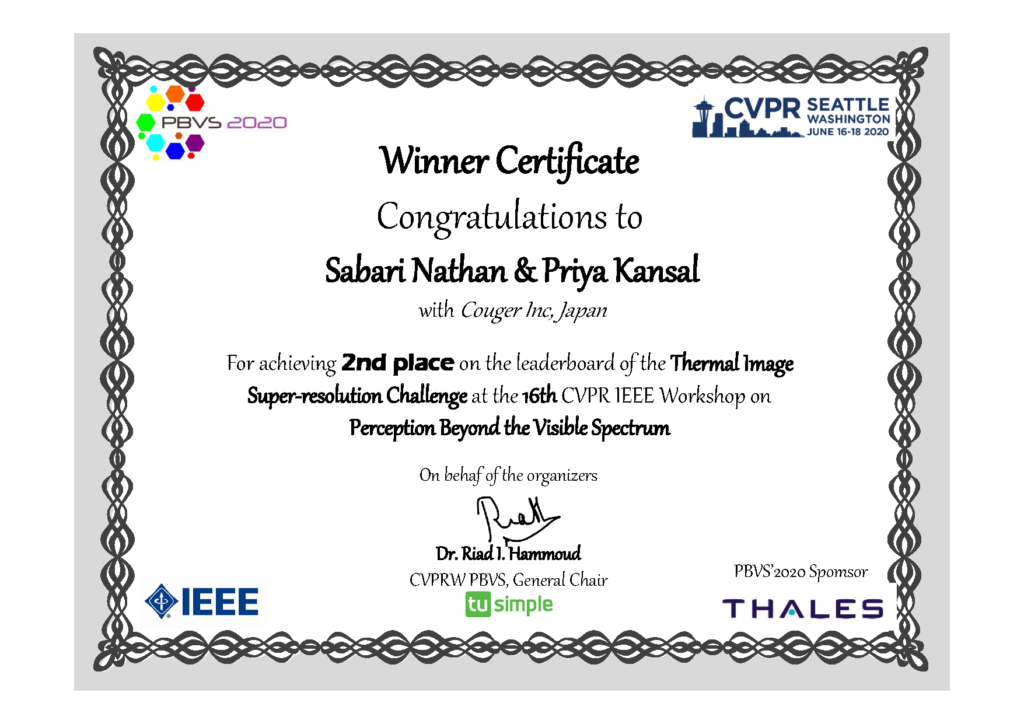
IEEE PBVS'20 Thermal Image Super-Resolution Challenge
This paper describes a method for generating high-resolution images from a pair of thermographic images acquired from different cameras through machine learning.
Overview
With the data explosion around the world, research and social implementation of AI are rapidly advancing, and in the age of AI, application methods to realize highly accurate automation that can respond to various situations are being tried and tested on a daily basis. One such application area was the theme of this competition: high-resolution analysis of thermographic images.
Unlike photographic image data, thermographic images are not affected by ambient light or shadows, have excellent transparency, and can detect heat. The heat detection makes them useful in a wide range of fields, including medical, military, and object detection. For example, it can be used to prevent the spread of viral infections at airports by identifying patients with fever, or to prevent accidents by detecting people when driving at night, when objects are difficult to see.
Since thermographic images generally have low resolution, the conventional approach has been to pre-process the data and add noise and blurring to achieve high resolution. On the other hand, there have been few methods for learning using a pair of images (low-resolution and high-resolution images) obtained from different cameras. This time, a competition was held to discuss a new machine learning method based on this pair of images.
On Couger's method, which won second place


The approach proposed in the paper is based on a deep convolutional neural network called the Multi-Level Supervision model, which utilizes convolutional layers, residual connections, and attention modules. It also records higher accuracy than the methods that have been commonly used. This method is superior in the following respects;
- Multi-level, so one model can handle high-resolution tasks at three different scales (x2, x3, x4).
- Low complexity because it focuses on lost information by using residual connections.
- The robustness (*1) of this model can be improved by using convolutional layers, residual learning, and CBAM (Convolutional Block Attention Module) to preserve spatial information.
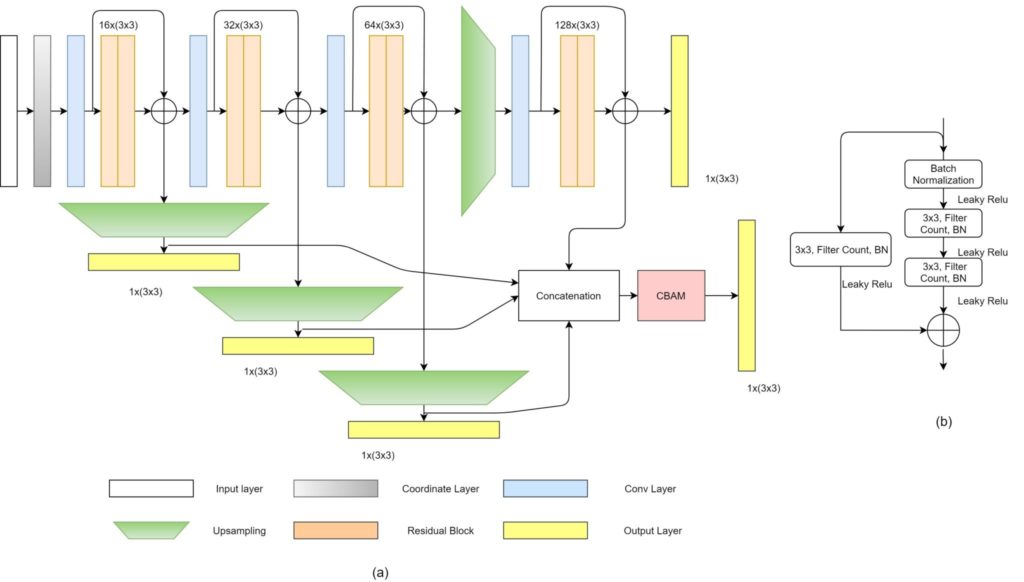
The architecture proposed by Couger has been shown to not only deliver results on the in-competition data set, but also to achieve the same level of performance on other data sets.
Currently, thermography equipment is expensive, and companies face a high hurdle in implementing the technology. By making it possible to increase the resolution of low-resolution images acquired with inexpensive equipment through machine learning, we can expect to raise the level of AI implementation in society.
Couger's Devanathan Sabarinathan and Dr. Priya Kansal, who authored the paper, have previously won third place in an eye tracking competition sponsored by Facebook Inc. and their paper on skeletal estimation was accepted at CVPR2019, among other achievements in the computer. Based on such research and development, Couger will continue to apply this technology to "Virtual Human Agent," a Human-like AI that deeply understands humans. Couger will continue to provide services and conduct research and development with the aim of implementing new technologies in society.
●About IEEE
The Institute of Electrical and Electronics Engineers (IEEE), headquartered in the United States, is the world's largest academic research organization. The IEEE is comprised of more than 420,000 members in more than 160 countries, covering such diverse areas as computing, sustainable energy systems, aerospace, communications, robotics, and health care.
● Couger, Inc.
We are developing a Human-like AI "Virtual Human Agent" combining AI, IoT, AR/VR, and Blockchain. We are working on a wide range of technological development, including the adoption of AI technology papers to the world's top conferences and game development achievements.
*1 : Robustness
Robustness is an internal mechanism or property that prevents a system from being changed by the effects of disturbances such as stress or environmental changes.




